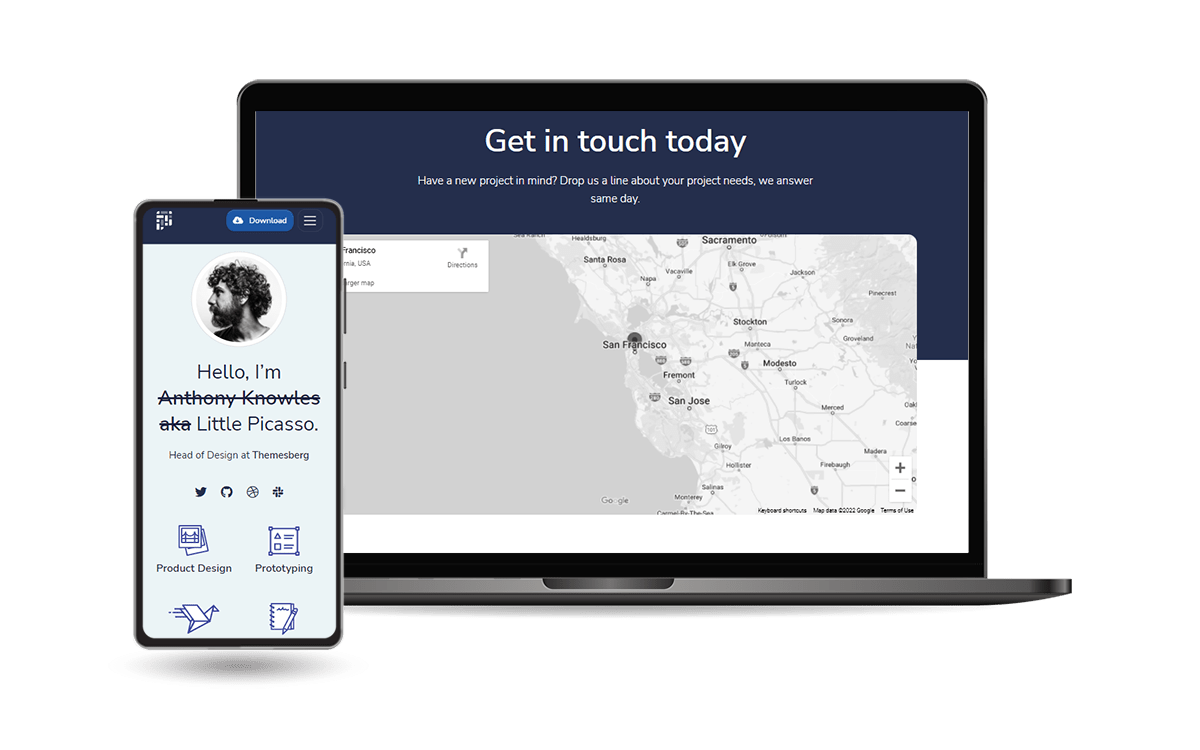Django Pixel Bootstrap 5
Open-source Django Starter coded on top Pixel Bootstrap 5 Design (Free Version).
Open-source Django project crafted on top of Pixel Bootstrap 5,
an open-source design from Themesberg.
The product is designed to deliver the best possible user experience with highly customizable feature-rich pages.
- 👉 Django Pixel Bootstrap 5 -
Product page - 👉 Django Pixel Bootstrap 5 -
LIVE Demo
2023-02-09✅ Features
Up-to-date Dependencies- UI Theme: Pixel Lite BS5
- can be used in any Django project (new or legacy)
- Authentication:
Django.contrib.AUTH, Registration DeploymentCI/CDflow viaRender

✅ Environment
To use the starter, Python3 should be installed properly in the workstation.
If you are not sure if Python is installed, please open a terminal and type python --version. Here is the full list with dependencies and tools required to build the app:
- Python3 - the programming language used to code the app
- GIT - used to clone the source code from the Github repository
- Basic development tools (g++ compiler, python development libraries ..etc) used by Python to compile the app dependencies in your environment.
- (Optional)
Docker- a popular virtualization software
✅ Start in Docker
👉 Step 1 - Download the code from the GH repository (using
GIT)
$ git clone https://github.com/app-generator/django-pixel.git
$ cd django-pixel
👉 Step 2 - Start the APP in
Docker
$ docker-compose up --build
Visit http://localhost:5085 in your browser. The app should be up & running.
✅ Manual Build
Download the code
$ git clone https://github.com/app-generator/django-pixel.git
$ cd django-pixel
👉 Set Up for Unix, MacOS
Install modules via
VENV
$ virtualenv env
$ source env/bin/activate
$ pip3 install -r requirements.txt
Set Up Database
$ python manage.py makemigrations
$ python manage.py migrate
Start the app
$ python manage.py runserver
At this point, the app runs at http://127.0.0.1:8000/.
👉 Set Up for Windows
Install modules via
VENV(windows)
$ virtualenv env
$ .\env\Scripts\activate
$ pip3 install -r requirements.txt
Set Up Database
$ python manage.py makemigrations
$ python manage.py migrate
Start the app
$ python manage.py runserver
At this point, the app runs at http://127.0.0.1:8000/.
✅ Manage App Users
By default, the starter is not provided with users. To access the private pages and the admin section (reserved for superusers) follow up the next sections.
👉 Create Superusers
To access the admin section, Django requires superuser privilegies. Let's create a new superuser and access the admin section of the project:
$ python manage.py createsuperuser
Once the superuser is successfully created, we can access the admin section:
http://localhost:8000/admin/
✅ Codebase Structure
The project is coded using a simple and intuitive structure presented below:
< PROJECT ROOT >
|
|-- core/
| |-- settings.py # Project Configuration
| |-- urls.py # Project Routing
|
|-- home/
| |-- views.py # APP Views
| |-- urls.py # APP Routing
| |-- models.py # APP Models
| |-- tests.py # Tests
| |-- templates/ # Theme Customisation
| |-- pages #
| |-- custom-index.html # Custom Index
|
|-- requirements.txt # Project Dependencies
|
|-- env.sample # ENV Configuration (default values)
|-- manage.py # Start the app - Django default start script
|
|-- ************************************************************************
✅ How to Customize
When a template file is loaded, Django scans all template directories starting from the ones defined by the user, and returns the first match or an error in case the template is not found.
The theme used to style this starter provides the following files:
# This exists in ENV: LIB/theme_pixel
< UI_LIBRARY_ROOT >
|
|-- templates/ # Root Templates Folder
| |
| |-- accounts/
| | |-- sign-in.html # Sign IN Page
| | |-- sign-up.html # Sign UP Page
| |
| |-- includes/
| | |-- footer.html # Footer component
| | |-- navigation.html # Navigation Bar
| | |-- scripts.html # Scripts Component
| |
| |-- layouts/
| | |-- base.html # Masterpage
| |
| |-- pages/
| |-- index.html # Dashboard Page
| |-- about.html # About Page
| |-- *.html # All other pages
|
|-- ************************************************************************
When the project requires customization, we need to copy the original file that needs an update (from the virtual environment) and place it in the template folder using the same path.
For instance, if we want to customize the index.html these are the steps:
Step 1: create thetemplatesDIRECTORY inside thehomeappStep 2: configure the project to use this new template directorycore/settings.pyTEMPLATES section
Step 3: copy theindex.htmlfrom the original location (inside your ENV) and save it to thehome/templatesDIR- Source PATH:
<YOUR_ENV>/LIB/theme_pixel/template/pages/index.html - Destination PATH:
<PROJECT_ROOT>home/templates/pages/index.html
- Source PATH:
To speed up all these steps, the codebase is already configured (
Steps 1, and 2) and acustom indexcan be found at this location:
home/templates/pages/custom-index.html
By default, this file is unused because the theme expects index.html (without the custom- prefix).
In order to use it, simply rename it to index.html. Like this, the default version shipped in the library is ignored by Django.
In a similar way, all other files and components can be customized easily.
✅ Deploy on Render
- Create a Blueprint instance
- Go to https://dashboard.render.com/blueprints this link.
- Click
New Blueprint Instancebutton. - Connect your
repowhich you want to deploy. - Fill the
Service Group Nameand click onUpdate Existing Resourcesbutton. - After that your deployment will start automatically.
At this point, the product should be LIVE.
✅ Resources
- 👉 Access AppSeed for more starters and support
- 👉 Deploy Projects on Aws, Azure and DO via DeployPRO
- 👉 Create landing pages with Simpllo, an open-source site builder
- 👉 Build apps with Django App Generator (free service)